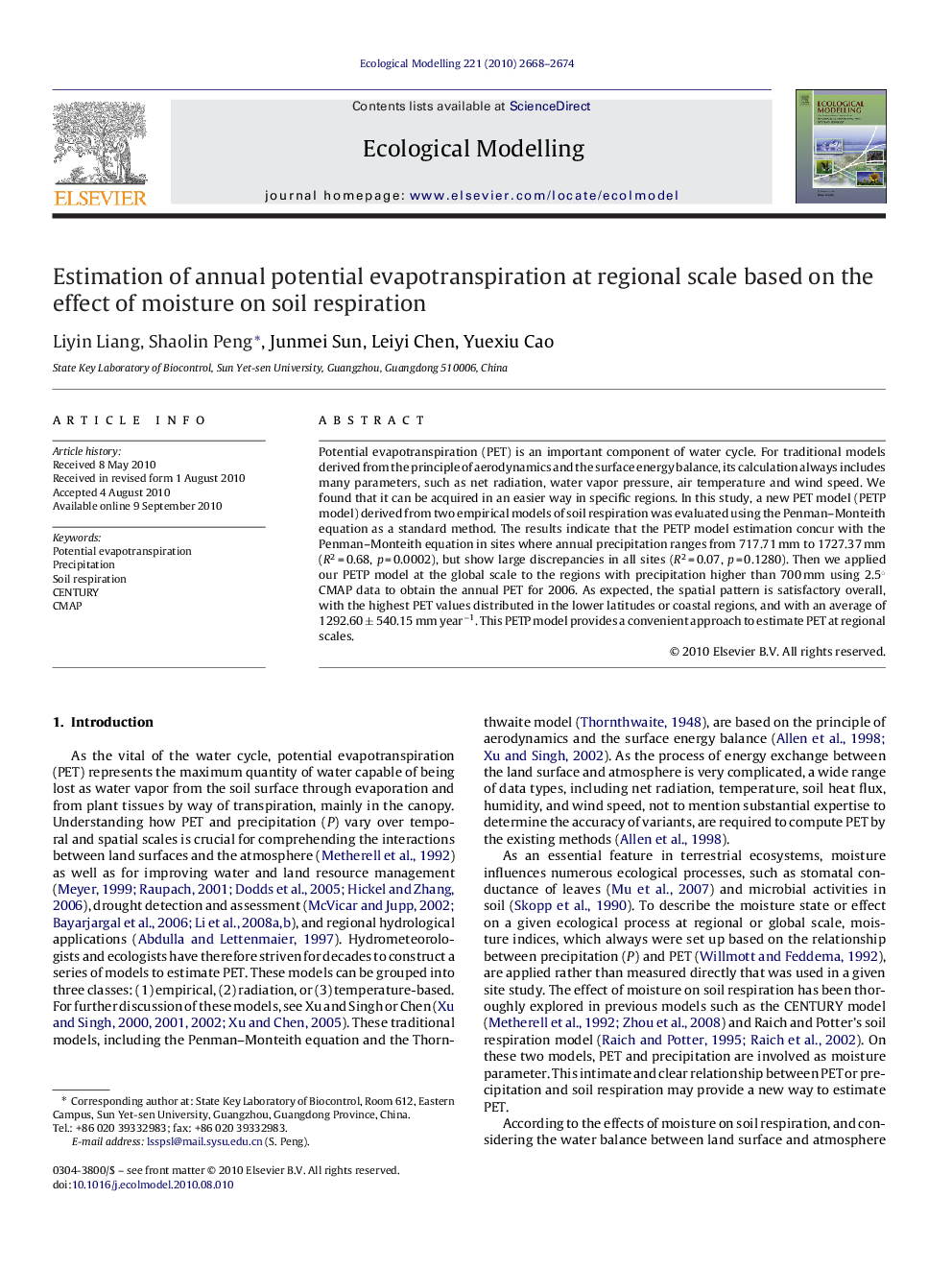| Article ID | Journal | Published Year | Pages | File Type |
|---|---|---|---|---|
| 4377275 | Ecological Modelling | 2010 | 7 Pages |
Potential evapotranspiration (PET) is an important component of water cycle. For traditional models derived from the principle of aerodynamics and the surface energy balance, its calculation always includes many parameters, such as net radiation, water vapor pressure, air temperature and wind speed. We found that it can be acquired in an easier way in specific regions. In this study, a new PET model (PETP model) derived from two empirical models of soil respiration was evaluated using the Penman–Monteith equation as a standard method. The results indicate that the PETP model estimation concur with the Penman–Monteith equation in sites where annual precipitation ranges from 717.71 mm to 1727.37 mm (R2 = 0.68, p = 0.0002), but show large discrepancies in all sites (R2 = 0.07, p = 0.1280). Then we applied our PETP model at the global scale to the regions with precipitation higher than 700 mm using 2.5° CMAP data to obtain the annual PET for 2006. As expected, the spatial pattern is satisfactory overall, with the highest PET values distributed in the lower latitudes or coastal regions, and with an average of 1292.60 ± 540.15 mm year−1. This PETP model provides a convenient approach to estimate PET at regional scales.
